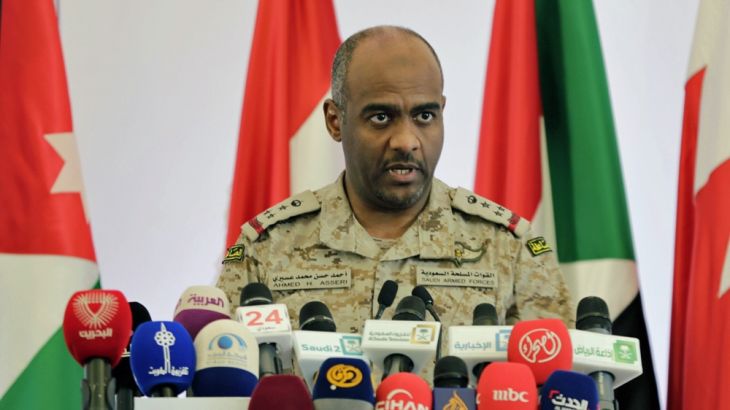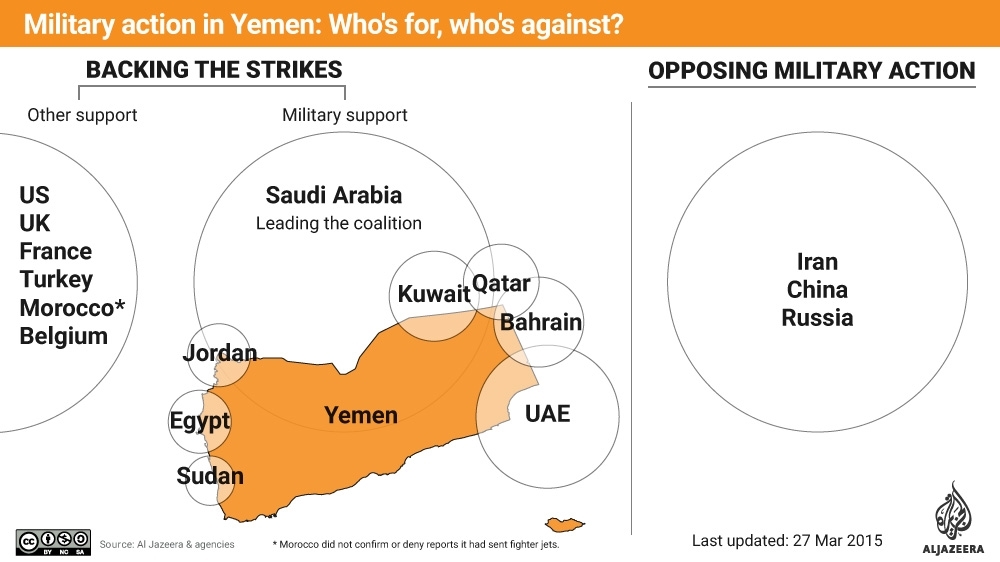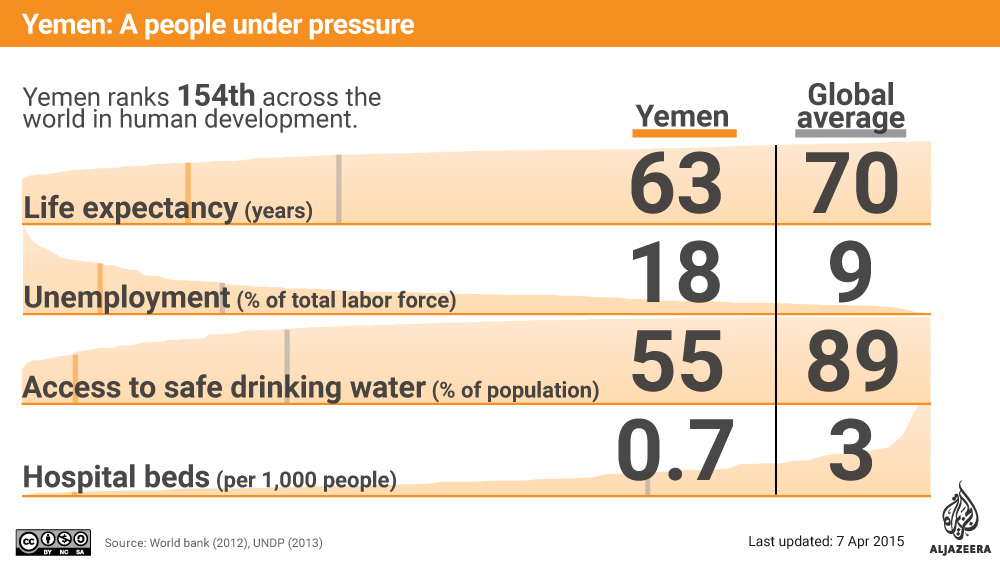Saudi Arabia assembles ‘massive force’ on Yemen border
Reinforcements sent to border after heavy exchange of fire with Houthis, ahead of planned five-day truce.

Saudi Arabia has assembled a “massive” additional force on its border with Yemen after trading heavy artillery and rocket fire with Yemen’s Houthi fighters, prior to a proposed truce taking effect.
Al Jazeera’s Mohamed Vall, reporting from Riyadh, said Saudi Arabia’s defence ministry announced on Monday that a “massive” force had reached Najran on its way to taking its position on the frontlines adjacent to Yemeni territory, following Monday’s exchange of fire.
Keep reading
list of 4 itemsUS sanctions shipping firm accused of links to Iran, Yemen’s Houthis
Vessel struck in Red Sea as Houthis promise attacks on more shipping lanes
What we know about deadly Houthi attack on cargo ship
|
|
He said the ministry did not specify the size of the force assembled but stated that it included advanced armaments capable of fighting in rugged mountainous areas.
Footage showing rows of tanks and armoured personnel carriers loaded on military vehicles headed towards Yemen were aired on a Saudi-owned television channel.
The Houthis said they fired Katyusha rockets and mortars on the Saudi cities of Jizan and Najran earlier on Monday, after Saudi forces hit Saada and Hajjah provinces with more than 150 rockets.
Saudi Arabia’s civil defence department said one Saudi national was killed in the shelling in Najran, which it said targeted a school and residence adjacent to a military post.
Another Saudi citizen and three expatriates were also injured in the fire, the department said.
Also, fighter jets from the Arab coalition struck positions of the Houthis, believed to be backed by Iran, in the central city of Taiz and in the oil-producing Marib province east of the capital, Sanaa.
There were no immediate details on any casualties.
Ceasefire flagged
Al Jazeera’s Vall said that “instead of a lessening in the fighting as the countdown continues towards the timing of the truce in about 24 hours, what we see is an escalation”.
“The Houthis have escalated their activities along the border and that has led to an intensification of air strikes in previous days,” he said.
The renewed border fighting came nearly a week after Houthis launched a mortar and rocket attack on Najran, reportedly killing several Saudi nationals.
At the time, the Saudi government said the Houthis had crossed “a red line” by carrying out the attack.

The Arab coalition offered a five-day ceasefire starting on Tuesday evening to allow delivery of humanitarian supplies into the country, but warned that the truce depended on the Houthis abiding by that deal.
The Houthis’ political council has said that they would like to see humanitarian aid delivered to the Yemeni people as soon as possible.
A group of 17 international aid agencies said on Sunday that five days were not sufficient to provide relief to the country, which after weeks of an air and sea blockade is suffering severe food and medicine shortages.
Speaking to Al Jazeera on Monday, Riyad Yassin, Yemen’s foreign minister, said he believed the Houthis had no desire for a ceasefire deal.
“The Houthis … they will not comply with any ceasefire and they are not willing to do any kind of discussion or negotiation,” Yassin said from Riyadh.
More than six weeks of air strikes have failed to push back the Houthis and fighters and army units loyal to the former president, Ali Abdullah Saleh.
On Sunday Saleh formally announced an alliance with Houthis after his house in Sanaa was bombed. His house was struck by Arab coalition fire for a second day on Monday, and he once again escaped uninjured.
Moroccan jet downed
In a related development, the Moroccan Royal Armed Forces, one of the earliest partners in the Arab coalition, announced that one of its F-16 fighter jets taking part in the Yemen air raids had gone missing.
Al Jazeera’s Vall said Monday’s development could further complicate the political situation with the proposed truce.
“We understand the Arab coalition is going to try to search on the ground for the pilot, if he’s still alive, and perhaps try to salvage any debris they can of the aircraft,” he said.
“This is difficult because the aircraft came down in Saada. It is a mountainous area and very difficult to access for the coalition troops.”
The Arab coalition has been conducting air raids against the Houthis since March 26, nearly a month after the fighters toppled the government of President Abd-Rabbu Mansour Hadi.
